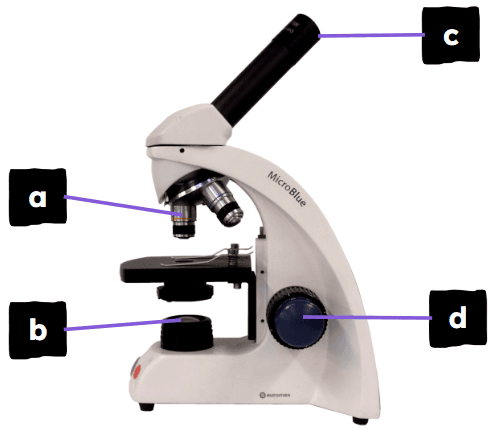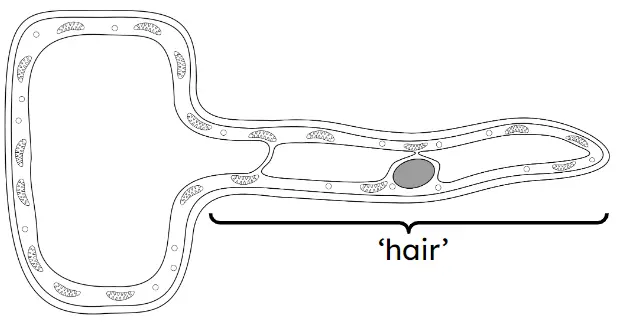Myths about teaching can hold you back
- Year 11
- OCR
- Higher
Observing root hair cells using a light microscope: practical
I can use a light microscope to observe a plant root hair cell and produce a scientific line drawing of it.
- Year 11
- OCR
- Higher
Observing root hair cells using a light microscope: practical
I can use a light microscope to observe a plant root hair cell and produce a scientific line drawing of it.
These resources will be removed by end of Summer Term 2025.
Switch to our new teaching resources now - designed by teachers and leading subject experts, and tested in classrooms.
These resources were created for remote use during the pandemic and are not designed for classroom teaching.
Lesson details
Key learning points
- A light microscope can be used to observe plant root hair cells.
- The parts of a light microscope and their functions.
- The sequence of steps for setting up a light microscope to observe cells including changing the magnification and focus.
- Observations from a light microscope can be recorded in a labelled scientific line drawing.
- Total magnification = magnification of the eyepiece lens × magnification of the objective lens
Keywords
Light microscope - an instrument that uses visible light and lenses to magnify a viewed specimen
Lens - a glass or plastic disc that refracts light to increase magnification
Focus - focus means to make an image sharper and clearer
Magnification - the number of times greater in size the viewed object is compared to its actual size
Root hair cell - a specialised plant cell found in the roots that absorb water and nutrients into the plant
Common misconception
Incorrectly calculating the total magnification by adding the magnification of the eyepiece lens to the magnification of the objective lens.
The correct way to calculate the total magnification (by multiplying the magnification of the eyepiece lens by the magnification of the objective lens) is practiced.
To help you plan your year 11 biology lesson on: Observing root hair cells using a light microscope: practical, download all teaching resources for free and adapt to suit your pupils' needs...
To help you plan your year 11 biology lesson on: Observing root hair cells using a light microscope: practical, download all teaching resources for free and adapt to suit your pupils' needs.
The starter quiz will activate and check your pupils' prior knowledge, with versions available both with and without answers in PDF format.
We use learning cycles to break down learning into key concepts or ideas linked to the learning outcome. Each learning cycle features explanations with checks for understanding and practice tasks with feedback. All of this is found in our slide decks, ready for you to download and edit. The practice tasks are also available as printable worksheets and some lessons have additional materials with extra material you might need for teaching the lesson.
The assessment exit quiz will test your pupils' understanding of the key learning points.
Our video is a tool for planning, showing how other teachers might teach the lesson, offering helpful tips, modelled explanations and inspiration for your own delivery in the classroom. Plus, you can set it as homework or revision for pupils and keep their learning on track by sharing an online pupil version of this lesson.
Explore more key stage 4 biology lessons from the Transport and exchange surfaces in plants unit, dive into the full secondary biology curriculum, or learn more about lesson planning.

Equipment
light microscope, pre-prepared slide of root hair cells, pencil, ruler
Content guidance
- Risk assessment required - equipment
Supervision
Adult supervision required
Licence
Prior knowledge starter quiz
6 Questions
Q1.Complete the word summary for photosynthesis.

Q2.This cell absorbs water into a plant. It is called a root cell.

Q3.Which process requires energy from cellular respiration?
Q4.Why is active transport needed for root hair cells to absorb nitrates from the soil?
Q5.As well as being a reactant in photosynthesis, water is used to maintain the structural integrity of many plants. Without water plants may wilt. Cells in a wilting plant are described as __________.
Q6.Many chemical reactions take place in the cell cytoplasm. Water is the in which the reactant and products are dissolved.
Assessment exit quiz
6 Questions
Q1.Which part of the light microscope is the objective lenses?

Q2.Put these statements in the correct order to describe how to set up a light microscope.
Q3.Looking from the side whilst moving the stage and slide towards the objective lens is a safety measure. Why?
Q4.Which of these should be present in a scientific drawing?
Q5.Scientific drawings often show the magnification used to see the object drawn. If the eyepiece lens is x10 and a x20 objective lens is used, what is the total magnification?
Q6.The diagram shows a root hair cell. How does the 'hair' help the root hair cell do its job?



